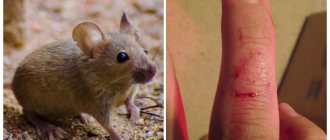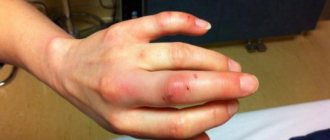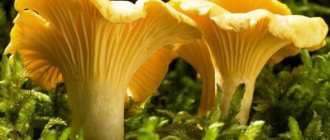Raising pigs is not an easy, but often profitable business. But they require careful care - young piglets especially cause a lot of trouble. One of the common phenomena is poisoning. All age and sex groups of pigs are susceptible to it. How to recognize poisoning in pigs, symptoms, treatment and emergency assistance - read below.
Causes of vomiting
The poisoned animal becomes weak, has a strong flow of saliva and diarrhea.
At the same time, the temperature remains normal. In this case, it is necessary to perform an urgent gastric lavage and also exclude this root vegetable from the diet. In addition, it is necessary to drink the pig with mucous decoctions, give it mala, preferably castor oil. When eating low-quality beets, the animal develops yellow mucous membranes, strong salivation, and the pupils become dilated. In this case, the respiratory rhythm increases, the temperature rises, and weakness develops. To reduce intoxication, you should rinse the stomach and give mucous decoctions to drink.
A person who decides to have pigs should know everything about their possible poisoning - causes, symptoms, treatment. Otherwise, time and effort in caring for livestock will be wasted.
These animals are often at risk of disease, especially poisoning. The problem with infections entering the body is that pigs do not understand food and eat everything that their owner feeds them.
- acute surgical diseases: peritonitis, appendicitis. acute pancreatitis, acute intestinal obstruction, bleeding in the gastrointestinal tract, acute cholecystitis;
- chronic diseases: gastritis. peptic ulcer of the stomach and duodenum, enterocolitis, duodenitis, cholelithiasis;
First of all, understand the difference between vomiting and simple regurgitation. Vomiting is a violent eruption of stomach contents through the mouth. Regurgitation (most often found in infants under one year of age) is a mild eruption of part of the stomach contents through the mouth, which is often accompanied by belching.
Vomiting occurs when there is sudden contact between the abdominal muscles and the diaphragm while the stomach is in a relaxed state.
Content
Cough is a protective reaction of the body by the respiratory system in response to the harmful effects of microorganisms or foreign objects. This symptom accompanies many ailments, both in humans and animals, including piglets.
A sick pig immediately stands out from the background of healthy ones. She is worried about a number of symptoms, which manifests itself: a state of lethargy, a drooping head, stubble that is sloppy and has a dull shade, the skin dries out, a rash appears, interest in food is lost, and body temperature changes.
Piglets that are switched to a non-dairy diet are very sensitive to food. Therefore, they often suffer from gastroenteritis.
It's all about the disrupted diet and the quality of the latter. When poisoned by toxins from low-quality food, the sensitive linings of the stomach are irritated, which is accompanied by thirst, tension and tightening of the abdominal walls is caused by pain, cyanosis of the ears, and the nose.
Animals suffer from diarrhea, which leads to exhaustion and emaciation.
Diarrhea can be replaced by short-term constipation, feces come out with a putrid odor, with gas bubbles, and streaked with blood.
Types of poisoning and their signs
There are several common types of poisoning:
- Poor quality products.
- Salt.
- Poisonous herbs.
- Chemicals.
- Medicines.
All this can cause poisoning of piglets. The symptoms are similar, but still have differences, depending on what the animal was poisoned with. In case of poisoning from green or sprouted potatoes, the temperature remains normal, but diarrhea and drooling appear. Boiled, standing beets cause fever, salivation, weakness and enlarged pupils. Breathing quickens. Poor quality food, in addition to increased temperature and salivation, can cause bloody stool. Diarrhea replaces constipation. What to do if your pig is constipated?Poisonous plants can also cause poisoning in pigs. Symptoms: the animal is restless and refuses to eat. His breathing quickens, his pulse increases, and he becomes short of breath. The disease is accompanied by diarrhea, drooling and weakness. A poisonous plant can get into the feeder along with freshly cut nettles or hay. You need to carefully choose a supplier of plant feed or monitor the condition of your plot if the pig feeds on it.
When using medications, the dosage must be strictly observed, otherwise the treatment may be harmful. Signs of drug poisoning in piglets: agitation, rapid heartbeat, shortness of breath, possible convulsions. Weakness, diarrhea and vomiting can also indicate this type of poisoning.
Some diseases in pigs have similar external manifestations, so if the pet is unwell, it is necessary to call a doctor to find out the cause.
Benefits and harms
Table salt is a product known to every person. Sodium chloride is not produced in the body, but is only ingested with food.
Salt is involved in all processes of human life. The product has positive and negative properties.
Useful actions:
Thus, salt is necessary for any organism to maintain normal functioning.
However, excessive consumption of table salt can harm organs and systems and lead to poisoning.
Harmful actions:
- Development of swelling,
- Increased pressure,
- Painful sensations in the joints,
- Increased sweating
- Constant thirst and, as a result, frequent urination,
- Increased load on the heart, liver, kidneys.
Table salt is found in almost all food products, so it is recommended to add it to food carefully so as not to consume an increased amount of the product and avoid poisoning.
Should food be salted?
Salt is included in almost all foods, so if the diet is prepared correctly, adding this mineral to food is not required. However, salt significantly changes the taste of food and improves it.
When preparing dishes, you must adhere to the following recommendations:
- Food should be salted at the end of cooking. It is advisable to add salt to an already cooled dish.
- It is not recommended to add additional salt to salads that have been seasoned with mayonnaise or other salty sauces.
- When cooking soup, you should taste the broth.
- When preparing dishes, it is recommended to taste them for salt no more than twice.
Salt is vital for the human body, but its excess leads to serious consequences. That is why it is recommended to add a minimal amount of this mineral to your food.
What happens in the body
According to modern scientists, the negative effect on the body caused by an increase in sodium chloride in the blood works as follows.
What happens in the body when you consume high amounts of salt? The substance binds liquids well when it enters the stomach. As a result of the chemical reaction, an intense release of silver ions is observed.
An overdose of table salt can cause severe irritation of the gastric mucosa and increased blood pressure.
General principles of emergency care for poisoning
Medical care for poisoning must be provided as quickly and energetically as possible (according to the principle of ambulance or emergency care) using a complex of etiotropic, pathogenetic and symptomatic agents.
The treatment plan for poisoning is based on the following main points:
- Elimination of the cause of the disease (removal of suspicious feed, ventilation of the room in case of suspected poisoning through the respiratory tract).
- Washing away toxic substances from the skin.
- Removing toxic substances from the stomach and intestines (gastric lavage, giving an enema, in some cases giving emetics).
- Binding and neutralization of poisons in the stomach and intestines (activated carbon, white clay, etc.).
- Removal of already absorbed poisons from the body (use of diuretics, laxatives).
- Specific (antidote) therapy aimed at neutralizing already absorbed poisons in the humoral environment of the body through chemical reactions, the use of antimetabolites, the use of reactivators, the use of pharmacological antagonism, etc.).
- Pathogenetic and symptomatic therapy aimed at increasing the body's defenses, normalizing metabolism, activating the cardiovascular, respiratory and other systems.
Non-communicable diseases
Salt poisoning is very dangerous for pigs, in particular for piglets, whose bodies are still quite weak. If you notice the first symptoms, you should immediately contact your veterinarian. Signs of sodium chloride toxicity include:
- Constant thirst.
- Abrupt refusal to eat.
- Pupil dilation.
- The appearance of vomiting.
- Frequent pulse.
- Inflammation or blue discoloration of the skin.
What to do if you observe at least some symptoms in a pig after eating food? You need to understand that your pig has been exposed to toxemia. You should immediately contact a veterinarian and begin providing primary care to the animal.
Call a doctor immediately, and while he gets there, you can first do a gastric lavage and prepare the boar or sow for examination. You can give some water.
The signs of the disease or the treatment process are the same for both boars or sows and piglets.
Diseases of piglets are classified into two types: non-contagious and infectious diseases. According to statistics, 85% of pigs are susceptible to infectious diseases, and only 15% are due to infectious diseases of pigs. Non-communicable diseases include:
- gastroenteritis;
- stomach ulcer;
- anemia;
- bronchopneumonia.
Infectious diseases include:
- Foot and mouth disease.
- Plague.
- Erysipelas.
- Dysentery.
- Paratyphoid.
- Swelling of tissues and organs.
The main and most important thing that a pig breeder needs to know is the first signs of poisoning. The main symptoms of pig poisoning are:
- Animals may appear depressed or overly excited.
- Dry skin.
- Ruffled matte bristles.
- Pink spots may be found on the skin.
- Lack of appetite.
- An increase or decrease in temperature is observed.
If there are the slightest symptoms that your animal has been poisoned, you should not self-medicate, and in this situation you must urgently call a veterinarian to provide first aid.
Symptoms and treatment of gastric ulcers in piglets
Symptoms of ulcers can often be observed in young piglets. The cause of this disease is the feeding of young animals with feed or the consumption of finely ground feed.
The first symptoms begin with a deterioration in general condition, loss of appetite, bloody mucus may appear in the stool, and vomiting of bile appears. The temperature increases by 1.
5 degrees. When the disease is advanced, dry skin and cold extremities appear.
To treat this disease, a diet is used for two days; it is also necessary to rinse the stomach and give laxatives. For peptic ulcers, phthalazole, etazol, synthomycin, and sulfadimezin are used. For prevention purposes, it is necessary to introduce vitamins, gamma globulin, and tissue preparations into the diet.
Treatment of gastroenteritis and dyspepsia
A similar illness usually occurs in small piglets after they are abruptly transferred to general complementary feeding, and with a lack of vitamins B and A in the diet, babies experience a loss of strength, lack of appetite, upset stomach, vomiting, and sometimes a drop in temperature is observed.
Treatment consists of a diet for two days, the mandatory use of disinfectants and laxatives such as (Glauber's salt, castor oil, salol). Feeding should consist of easily digestible foods such as mash and porridge. For treatment purposes, antibiotics are prescribed (mycerin, biomycin, terramycin).
| A drug | Application procedure |
| Terramycin | Apply the solution for 4 days from 5 to 15 mg, twice a day. |
| Biomycin | Dissolve 6 to 10 mg of the drug in sweetened boiled cooled water. Use 3 times a day 30 minutes before sows suckle. The solution is prepared just before use. |
| Mycerin | The solution is prepared at the rate of 4 thousand IU of mycerin per ml of solution. The dose taken is from 6 to 10 thousand IU per kilogram of piglet weight. Apply the solution for 3 days 2 times a day. The prepared solution can be stored for no more than one day. |
Symptoms and treatment of bronchopneumonia and bronchitis
The main cause of bronchopneumonia is damp rooms, sudden changes in temperature and drafts. The first symptoms indicate fever, cough, mucus discharge from the nose, and the animal’s refusal to eat.
Sick pigs should be transplanted into a bright, draft-free, dry room. Animals must be given expectorants and antipyretics. It is allowed to take medications such as (sulfadimezin and streptocide), as well as antibiotics.
Anemia in piglets
At birth, small piglets produce a sufficient amount of hemoglobin, but as the animal grows, its amount sharply decreases, which leads to anemia.
Symptoms of anemia are as follows: young animals develop pale skin, the stubble begins to lose its shine, and after 15 days white feces appear in the form of diarrhea. The piglets begin to lose weight and be stunted.
In order to protect pigs from such a disease, it is necessary to introduce iron preparations into the diet, such as (glycerophosphate, iron lactate, ferrodex, ferroglucin-75, ferrous sulfate).
Symptoms and treatment of plague
Distemper in animals is one of the most dangerous diseases. The causative agents of this disease are microorganisms that are invisible under a simple microscope. Plague is transmitted from infected animals to healthy ones, as well as the corpses and slaughter products of infected livestock.
Infected premises, clothing, water, food, equipment, and manure can cause distemper. Rats and flies are also carriers of this disease. Increased temperature, lack of appetite, lethargy, inhibited movement, inflammation of the eyes, pink spots on the skin, all these signs are considered the main symptoms of distemper.
Prevention of distemper is carried out by administering an intramuscular anti-plague injection of the virus vaccine (ASV) from the “K” strain, latinized against distemper in pigs. It is administered intramuscularly to one-month-old piglets ten days before weaning. The vaccine is used in the first 4 hours after dilution. Only healthy animals are subject to vaccination.
Non-communicable diseases of pigs include pathologies of the respiratory and digestive organs, which are not related to infection. This also includes ailments caused by a lack of vitamins in the body.
Poisoning
- weakness;
- refusal of food;
- diarrhea;
- trembling of limbs;
- dilated pupils;
- thirst (with salt poisoning);
- convulsions;
- vomit.
Treatment of poisoning includes gastric lavage through a tube, administration of antidotes if it is caused by poisonous plants. In any case, you need to consult a veterinarian.
Vitamin deficiencies
A lack of vitamins in the body can lead to serious health problems. For example, with a lack of vitamins D and A, as well as the microelements phosphorus and calcium, diseases develop - rickets and dystrophy, in which the skeletal system of animals suffers.
With a lack of iron, piglets develop anemia. It is important to try to diversify your livestock's diet to avoid such problems.
Treatment of vitamin deficiencies involves replenishing the lack of vitamins and microelements using injections.
Esophageal blockage
Diseases caused by infection should be feared as they can kill all the animals on a farm in a matter of days. Let's look at a few examples of what pigs can get sick with.
Aujeszky's disease (false rabies)
This disease is caused by a DNA virus belonging to the herpesvirus genus. The incubation period lasts up to 3 weeks. The disease develops rapidly: animals die within 12 hours after symptoms are noted.
In adults, signs of infection are:
- foam at mouth;
- curvature of the neck;
- convulsions;
- depression or strong excitement;
- pigs adopt a sitting dog pose;
- the temperature rises to 42 degrees.
There is no effective treatment for Aujeszky's disease. Livestock vaccination is used for prevention.
African plague
The causative agent of African plague is an iridovirus containing a DNA molecule. The incubation period lasts up to 15 days, after which symptoms of the disease appear:
- severe oppression - the animal lies down almost all the time;
- cyanosis of the ears;
- heat;
- bruises on the skin in the groin and shoulder blades;
- purulent conjunctivitis;
- rapid, intermittent breathing, cough;
- disorders of the digestive system - bloody diarrhea or constipation.
The mortality rate from African plague reaches 90-100%. Individuals who have recovered remain carriers of the virus. Treatment for this disease, as well as effective preventive measures, have not been developed.
Dysentery
- ascariasis;
- trichinosis;
- cysticercosis;
- diseases from ticks (skin parasites).
Ascariasis
Cattle diseases
Table salt poisoning
Etiology.
Poisoning occurs when animals* eat feed with a high content of sodium chloride, consume large quantities of pure salt, salt water, etc. Mineral starvation and insufficient watering contribute to severe disease. Pathogenesis. Sodium chloride plays an important role in metabolic processes and is necessary for normal life. However, concentrated solutions of it cause disruption of the permeability of cell membranes, osmotic pressure in tissues and their dehydration. After absorption into the blood, sodium chloride is adsorbed by red blood cells, causing their pyknosis, the conversion of oxyhemoglobin into methemoglobin, oxygen starvation of tissues and degenerative processes in them. The entry of a large amount of sodium chloride into the blood leads to a sharp disturbance in the ratio of mono - (Na and K) and bivalent (Mg and Ca) cations, depolarization of protein-lipid membranes of cells of the nervous system, disruption of electron transport in the chain of respiratory enzymes and a disorder of reflex activity.
Clinical signs. In acute salt poisoning, increased thirst, diarrhea mixed with blood, frequent urination, dilated pupils and weakened vision, impaired coordination, agitation and depression with periodic convulsions, paresis and paralysis of the limbs are observed. At the same time, an increase in pulse and respiration is noted, followed by a weakening of cardiac activity. Body temperature decreases. Death occurs on the 1st–3rd day.
With repeated use of subtoxic doses of sodium chloride, chronic poisoning occurs, which is manifested by thirst, frequent bowel movements and urination, and periodic depression.
Pathological changes. In acute poisoning, blueness of the visible mucous membranes and severe rigor mortis are noticeable. In the digestive tract, especially in the abomasum, there is congestive hyperemia, hemorrhage and inflammation (acute catarrhal, sometimes hemorrhagic or necrotic). There are dystrophic changes in the heart, clots of coagulated blood, hemorrhages under the epi- and endocardium. In the lungs there is often congestive hyperemia, edema and hemorrhages. Signs of congestive hyperemia, in some cases in combination with hemorrhages, are also found under the serous membrane of the chest and abdominal cavity, intestines, in the brain, spleen and other organs.
Pathohistological changes manifest themselves most dramatically in acute poisoning in the central nervous system: a state of coagulation, melting, vacuolization until complete death and disintegration of neurons. The blood vessels of the brain are dilated and filled with red blood cells. Along the vessels, without connection with them, a network-like softening of the medulla and extensive hemorrhages are detected. Signs of circulatory disorders in the form of vascular dystonia, hyperemia and stasis, increased permeability with the release of the liquid part and blood cells are found in many organs. In chronic poisoning in the brain, the predominant picture corresponds to a state of nerve cell atrophy with wrinkling, sclerosis and neuronophagy. In the walls of blood vessels of many organs, homogenization and fibrinoid swelling are observed, and in the epithelium of the kidney tubules, in addition, granular or hydrocele is observed.
The diagnosis is made on the basis of clinical, pathological and anatomical data and the results of a chemical and toxicological study, taking into account the nature of the feed and water. It is only necessary to keep in mind that sodium chloride is normally detected in the contents of the digestive tract and internal organs of animals.
Salt poisoning in animals
Salt poisoning in adults and children causes many unpleasant moments. Why is it possible to develop an overdose?
Salt poisoning occurs when there is an excess of salted fish, meat, food waste, or improperly prepared feed mixtures in the diet.
Symptoms of poisoning:
- refusal of food;
- vomiting, irregular heart rate and breathing;
- dilated pupils, convulsive syndrome;
- acute thirst, salivation, coma.
When the first symptoms appear, calcium chloride is administered intravenously and calcium gluconate intramuscularly. Animals are allowed to drink often, but little by little. To prevent salt poisoning, observe the daily salt intake in feed. A dose of 125-250 g of table salt per day is lethal for pigs.
Table salt is an integral part of the diet of all types of animals. In pigs at a dose of 0.2-0.5 g per 1 kg of weight, it improves appetite and absorption of nutrients entering the body.
But if you give it in excessively large doses or at animal levels after a long salt fast, then salt poisoning appears in all types of animals, especially pigs and poultry.
Among fur-bearing animals, the most sensitive to table salt poisoning are minks and sables; Arctic foxes, foxes and raccoons react somewhat weaker to table salt.
Etiology. In some private household plots, peasant farms, and sometimes agricultural enterprises, animals suffer from chronic salt starvation as a result of improper use of table salt, when it is placed in feeders or left on walking yards in the form of licks, and also when owners do not add the required amount of table salt to their diets.
Animal owners need to know that lethal doses of table salt are: for cattle 1.5-3 kg, for horses 1-1.5 kg, for sheep and pigs 125-250g, for dogs 30-60g per head, for animals 3- 4g per 1 kg of weight and for medium-weight chickens 4.5g.
At the same time, if the diet of gilts contains an insufficient amount of minerals, then poisoning and death of piglets occurs at a dose of salt of 0.5-2 g per 1 kg of weight, and for foals - at 1.5 -2.5 g. And vice versa, with a sufficiently high supply of gilts with minerals, gilts died at a dose of salt of 9-13 g, and foals - 6 g per 1 kg of weight.
In animals, salt poisoning occurs when using large pieces of crystalline salt, poorly dissolved in water, and in pigs, when feeding salted fish, pickles and tomatoes, waste from canteens, cafes and restaurants, when feeding herring and meat brines.
When feeding brines, poisoning occurs not only as a result of the high concentration of salt in them, but also due to the presence of toxic breakdown products of proteins (ptomanna) of the feed.
Pathogenesis. The mechanism of action of table salt on the animal’s body is reduced to a sharp disruption of the ionic composition of the blood. There is a predominance of monovalent cations (Na, K) over divalent cations (Ca, Mg) causing overexcitation of the nervous system. In this regard, the action of divalent and monovalent ions resembles the action of mediators (acetylcholine and adrenaline).
In case of fatal poisoning of pigs, the sodium content in their blood increases 1.5-2 times, and in erythrocytes - 3-5 times (up to 150-280 mg%); the concentration of chlorine in plasma and erythrocytes is 1.5-2 times higher.
Sodium and chlorine accumulate in all organs. Hemoglobin combines with potassium during the transfer of oxygen from the lungs to the tissues.
In case of poisoning with table salt, excess sodium replaces potassium in hemoglobin, which entails a disruption of the function of hemoglobin in the body, resulting in oxygen starvation of tissues, metabolic disorders, pulmonary edema and death of the poisoned animal from asphyxia.
In pigs, symptoms of table salt poisoning usually appear after 12-24 hours and are characterized by thirst, salivation, increased breathing and muscle tremors. Body temperature rises.
During excitement, poisoned pigs make manege movements and bump into obstacles. During a clinical examination, the veterinarian notes dilated pupils, weakened or completely lost vision, impaired coordination of movements, and observes redness or bluish discoloration of the skin.
Within 3-5 minutes, tetanic and clonic convulsions in the animal are replaced by depression. As a result of pharyngeal paresis, pigs refuse to feed and drink.
Poisoned animals may vomit and produce a lot of saliva from the mouth. There is diarrhea, sometimes we find blood in the stool.
Cardiac activity is weakened, the pulse is weak, frequent, breathing is intense. Poisoned animals adopt a sitting dog pose.
The death of animals is preceded by their comatose state. In case of non-fatal poisoning, animals recover within a few days.
In cattle, table salt poisoning occurs in the form of gastroenteritis with increased thirst, vomiting and diarrhea. In cases of poisoning with herring brine, these symptoms are accompanied by grinding of teeth and trismus of the masticatory muscles. Pregnant cows abort. After a normal calving or abortion, a cow's uterus may fall out.
In sheep, salt poisoning is accompanied by severe thirst. During a clinical examination, a veterinarian notes redness and dryness of the oral mucosa, colic, diarrhea, and sometimes polyuria. The death of sheep occurs from asphyxia as a result of pulmonary edema.
Category: Food poisoning
Table salt poisoning is possible in people and animals. Excessive use of a popular substance can lead to negative consequences in the body. What to do if there is an overdose of table salt?
Benefits and harms
General symptoms of poisoning
Regardless of the type of toxic substance, there is a certain group of signs that will help determine the toxic effect on the body. If you know how poisoning with a particular substance manifests itself, you can provide emergency assistance before contacting a veterinarian. Symptoms include:
- depression, apathy;
- refusal of food or “perverted appetite” - an attempt to eat inedible objects;
- urge to vomit;
- diarrhea, the presence of blood, foam, mucus in the stool;
- increased salivation, the appearance of foam in saliva;
- slow or fast heartbeat;
- change in color of mucous membranes or skin;
- convulsions;
- uncertain, shaky gait;
- changed behavior;
- dilated pupils.
If you notice several of the above signs, you should contact your veterinarian. In some cases, the animal cannot be saved, but this will help save the entire population.
How are preventive actions carried out?
All further treatment and procedures for recovery are determined only by the veterinarian. Almost always, intramuscular injections of calcium gluconate help well in the treatment of sodium chloride poisoning. The frequency of administration and dosage of the medicine varies depending on the severity of the condition of the sick animal and ranges from 1 to 5 ampoules of 10 ml 4-5 times a day.
For intoxication with table salt, a 1% solution of triammon phosphate is used. The dose is also selected by the doctor depending on the degree of poisoning and starts with 0.4 g/kg of the hog's live weight.
If the condition worsens after using a laxative, a 10% solution of sodium chloride is administered; it is recommended to force the patient to drink large amounts of water.
To restore the nutritional process, hydrochloric acid is prescribed in small quantities.
The main prevention of intoxication in pigs is fresh, properly selected and, above all, high-quality feed. The vegetable part should be prepared only from healthy root vegetables.
If it is decided to add plants to the diet, then it is necessary to ensure that poisonous species are excluded. It is necessary to avoid the presence of treated crops in the pig's diet, as this can have disastrous consequences.
What is table salt
The scientific name for table salt is sodium chloride. This mineral is a food product. It is divided into several grades: extra - the highest quality, highest, first and second.
The mineral has the appearance of colorless and odorless crystals. Natural or sea salt can have different shades (brown or gray); this color is given to it by various additives of other mineral salts.
You can find several types of salt on sale: pure, with the addition of iodine (iodized), coarse or finely ground.
There are several ways to extract the mineral:
- Evaporation of sea water. In this case, natural evaporation of water occurs, and the mineral itself settles in the resulting mountain voids. This salt is called self-settling salt.
- Evaporation of water from salt lakes. This type of salt is called garden salt. It is mined from the bottom of salt water lakes.
- Rock salt is obtained in mines where sedimentary rocks are mined.
- Evaporated salt is obtained by evaporating salt solutions. They are obtained through wells passing through layers of rock salt. Natural underground brines are also mined.
INTERESTING! Currently, only two types of minerals are more often mined - self-salt and rock salt.
Is it possible to die from an overdose?
Is it possible to die from salt poisoning? This phenomenon occurs in rare cases. Death is possible if you consume more than three grams of salt per kilogram of weight.
Excessive consumption of nitrite salt can also cause death.
This product is used in the preparation of sausages and is commercially available. However, experts advise against using this substance in its pure form.
What can poison a pig?
A toxic substance can enter an animal’s body in three ways:
- by mouth with food or water;
- through the surface of the skin.
through the lungs when inhaling vapors;
In most cases, poisoning in pigs develops when toxic substances enter the digestive tract. This can happen for the following reasons.
- Using moldy, poor quality feed. Toxins are formed in feed as a result of improper storage or due to violations of preparation technology.
- Eating affected grain. It may contain mycotoxins - waste products of microscopic fungi. When eating such food, pigs develop mycotoxicosis: fusariotoxicosis, aflatoxicosis, ochratoxicosis. This group of poisonings also includes ergotism caused by ergotoxins from ergot and smut.
- Plant products may contain pesticides. These pesticides are used in agriculture to kill weeds and pests. Pesticides contain arsenic, fluorine, organophosphorus and organochlorine compounds, which are dangerous to animals and humans.
- Meat and bone meal made from low-quality raw materials or spoiled during storage.
- Table salt poisoning in pigs develops as a result of feeding them food waste, mixed feed for cattle, and incorrect dosage of sodium chloride during the production of feed mixtures.
- Feeding animals with sprouted or greened potatoes. Such tubers contain a poisonous alkaloid - solanine. It is also present in the tops and seeds of potatoes, unripe tomatoes and eggplants.
- Often, on farms, piglets are given boiled or steamed beets. When the brew cools slowly (within 5–6 hours), the nitrates of root vegetables turn into harmful nitrites. In the same way, pigs can be poisoned by boiled nettles if they grew on soils contaminated with nitrates.
- Flaxseed cake. Its toxicity depends on the content of the glycoside linamarin. In the presence of water, it is converted into poisonous hydrocyanic acid. Poisoning in piglets and pigs is rare, but occurs in an acute form with the death of animals within 24 hours.
- Cotton cake. Contains the toxin gossypol. Intoxication usually develops with prolonged feeding.
Flaxseed and cottonseed cakes must be tested in the laboratory for toxicity.
- Food waste. They should be monitored for salt content and boiled before feeding.
- Heavy metals – arsenic, mercury, lead. They are part of industrial pesticides. Copper salts, such as the commonly used copper sulfate, are also dangerous for pigs.
- Concentrated acids and alkalis. Used for disinfection and cleaning of equipment; in production processes at enterprises producing feed.
- Veterinary preparations. Poisoning of pigs and piglets can occur due to improper use of veterinary drugs. Most often, antibiotics, sulfonamides and nitrofurans, drugs against ectoparasites and helminths are to blame. Baits containing anti-rodent poisons (zoocoumarins) are dangerous for pigs.
- Poisonous herbs enter the feeder as part of freshly cut forbs, hay, and silage. Euphorbia, St. John's wort, foxglove, henbane, lupine, groundsel, cress, field mustard, and ranunculaceae are toxic to animals.
Treatment and prevention
After poisoning with sodium chloride, pigs should not be given food containing table salt, the content of which in the feed mixture exceeds the threshold of 0.5%. Piglets do not need to introduce salt into their diet right away - 40-50 grams every day, pregnant sows - 30-40 grams, suckling sows - 40-50 grams.
You need to clearly know how much salt the piglet consumes per day.
Very small piglets (up to three months) are recommended from 10 to 15 grams of salt. From 5 months add 15-20 grams, from 7 months - 20-30 grams of sodium chloride per day, and after 9 months about 30-40 grams.
Under no circumstances should a pig be allowed to eat feed made for ruminants. We should not forget that an animal, like a person, must receive a sufficient mineral and vitamin complex.
In order to prevent food salt poisoning, the breeder must constantly monitor the health of his pigs. It is impossible for a pig to refuse food; you need to monitor the amount of food and water consumed.
It is also advisable to use feed in granular form, which does not allow uneven distribution of salt during transportation of the product.
What is the danger of table salt intoxication? Such poisoning can lead to the development of certain adverse consequences.
Results:
- Kidney dysfunction
- Heart rhythm disturbances
- Pathological conditions of the gastrointestinal tract,
- Problems in liver function.
The future fertility and health of the pig are determined by proper care of the animal. Therefore, before purchasing a pig, you should pay attention to its proper maintenance. Poisoning of pigs occurs when they eat poor quality food and poor care.
There are 2 types of diseases in piglets:
- diseases are not contagious;
- infectious diseases.
Based on statistics, 85% of animals can become infected with infectious diseases, and 15% of pigs suffer from non-infectious diseases.
The following are non-contagious diseases:
- stomach ulcer;
- gastroenteritis;
- bronchopneumonia;
- anemia.
Contagious diseases are:
- dysentery;
- erysipelas;
- foot and mouth disease;
- paratyphoid;
- plague;
- swelling of organs and tissues.
Poisoning of piglets and pigs: symptoms
The main point in owning a pig is to know and recognize the first signs of intoxication.
Symptoms appear as follows:
- state of excitement or depression;
- dry skin;
- the bristles are wrinkled and have a matte color;
- sometimes pink spots appear;
- body temperature falls and rises.
When an animal is poisoned by potatoes, the following symptoms are observed:
- increased temperature;
- saliva is produced profusely;
- muscle weakness;
- diarrhea.
Beet poisoning is accompanied by:
- drooling;
- yellowness of the mucous membranes of the eyes;
- dilated pupils;
- general weakness;
- rapid breathing;
- elevated temperature.
Poor quality feed affects the body in the following way:
- saliva flows;
- the animal refuses food;
- suffer from constipation;
- further, diarrhea worries;
- the temperature rises;
- bloody stool.
When poisoning with rat poison and other pesticides occurs:
- copious amounts of saliva;
- diarrhea;
- paralysis;
- breathing is frequent, difficult;
- the animal staggers when walking.
Eating poisonous plants causes the following symptoms:
- no appetite;
- saliva flows;
- the pig's pulse is increased;
- restless animal;
- breathing is frequent;
- diarrhea;
- dyspnea;
- weakness in the body.
Protein poisoning is rare. Intoxication occurs due to pigs consuming large amounts of soy. The animal exhibits the following symptoms:
- lying position;
- it is difficult to rise and stand on your feet;
- possible suffocation;
- death from starvation;
- the temperature remains normal.
Intoxication of pigs with table salt is a common occurrence. It is necessary to monitor the condition of the pig for 30 minutes. The following symptoms will be noticeable:
- thirst;
- sudden withdrawal from food;
- vomiting begins;
- pupils become wide;
- pulse slows down.
Poisoning of pigs and its prevention
Poisoning is most often caused by eating harmful wild plants, which are often found on roadsides, in vacant lots, landfills, in neglected gardens and orchards, in bushes, along ditches, and ponds. Poisonous wild plants pose the greatest danger to pigs of private owners, since free grazing animals have wide access to such herbs. Therefore, an amateur pig farmer needs to know harmful plants and be able to eliminate their effects.
They are divided into actually poisonous, in which the poison is contained constantly or in separate phases of development, and conditionally poisonous. In the latter, poison is formed during the process of decay, mold damage, etc. The toxicity of harmful plants is variable. Therefore, if at a certain time of the year animals do not get sick when feeding poisonous plants, this does not mean that this plant is harmless.
Poisonous plants can cause acute poisoning, which causes severe irritation in the stomach and intestines, and necrosis of the mucous membrane. Poisoning is accompanied by sharp pain, retching and vomiting, fever, convulsions, paralysis, diarrhea and a narcotic state, characteristic breathing disorders, pulse, and violent behavior (see table).
Characteristics of poisoning of pigs by poisonous plants
Poisoning of animals can also be caused by the most common, widely available feeds if they are not properly stored, prepared for feeding, and fed.
At home, pigs are often given boiled feed. If the diet includes beets, it should not be allowed to be cooked in the morning and fed in the evening. You cannot cook this food in the evening for morning consumption. When cooling slowly - over 5-12 hours - nitrates are formed in the beets and poisoning can occur, which often leads to the death of animals.
To prevent poisoning, beets should be quickly brought to a boil, boiled well (at least 30 minutes), removed from the boiler, cooled as quickly as possible and fed immediately. You should also prepare nettles for feeding.
Cotton cake is very toxic for pigs, as it contains a toxic substance - gossypol. Preliminary preparation of the cake for feeding is necessary. It is poured with a 2% solution of slaked lime or a 2.5% solution of ash alkali for 24 hours, then washed twice with water and fed in a mixture with other feed, constantly monitoring the condition of the animals. At the first signs of poisoning, the cake is excluded from the diet.
It is necessary to ensure that the pigs’ diet does not include rotten, sour, moldy, frozen feed, contaminated with spores and fungi. Feed for pregnant and suckling sows is checked especially carefully. Feeding such feed to pregnant sows can lead to abortion, and to suckling sows - to illness and death of piglets.











